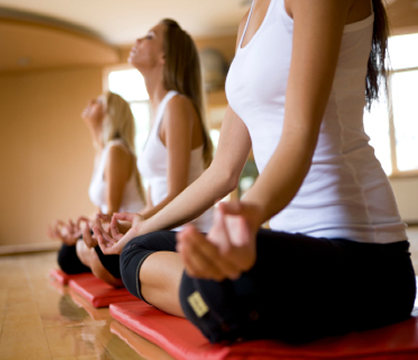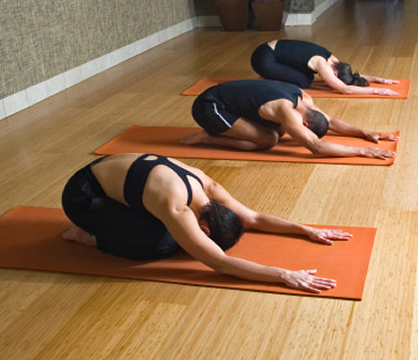Books Look to Science to Prove Benefits and Risks of Yoga
One year ago, William Broad, senior science writer for “The New York Times,” created a stir with his article titled, “How Yoga Can Wreck Your Body.” In the article, Broad argued that yoga is not the miracle cure-all it is often touted to be, but contains real risks that often go unacknowledged amidst all the hype. He cited evidence of rare, though serious injuries that include everything from torn muscles to strokes, which produced a passionate, mixed response from the yoga community. Expanding on these scientific findings and renewing the debate on one of the country’s most popular forms of exercise, Broad has released a new book, “The Science of Yoga,” that aims to educate yogis on the pros and cons of their practice.
Broad researched the book for over 5 years and presents the first comprehensive, evidence-based evaluation of the claims of yoga. And, as anyone who has stepped foot in a yoga studio knows, these claims are great, including all kinds of restorative and healing benefits for the mind and body. Broad’s book is recognized as the first serious attempt to untangle the fact from fiction to start to build a path to a yoga that is based on science, rather than the untested claims of gurus.

Broad’s major beef is that yoga is presented as a perfectly safe, gentle alternative to more demanding fitness activities. With most forms of exercise, practitioners are aware of the risks. Runners know about the possibilities of shin splints and knee injuries, for example, and know how to recognize them. Broad argues that yoga also comes with inherent risks but these are scarcely acknowledged, which has come at a great cost to some practitioners. The scariest risk, and the one that gets significant attention in the book, is that of stroke.
Broad reports that normally, “the neck can stretch backward 75 degrees, forward 40 degrees and sideways 45 degrees, and it can rotate on its axis about 50 degrees. Yoga practitioners typically move the vertebrae much farther. An intermediate student can easily turn his or her neck 90 degrees — nearly twice the normal rotation.”
In a small number of people, this has resulted in cutoff of blood to the brain, leading to symptoms of stroke. Broad says this not to scare people away—he has been practicing yoga himself for decades, with no intentions to stop—but simply to inform people of the risk and the specific poses, such as shoulder stand, that are associated with it.

Another claim he addresses in the book is that of weight loss. Yoga is often included in fitness regimens by those hoping to slim down. Yet, one of the most surprising sections in the book details the evidence that yoga actually slows metabolism.
However, dieters shouldn’t give up hope on yoga. It was also found that yoga’s ability to lower stress and improve mood can help to reduce emotional eating, which can be a powerful weight loss tool in itself.
The discussion of metabolism and yoga is typical of Broad’s findings, many of which show that yoga may not live up to each and every inflated promise of what he calls the “yoga industrial complex,” but does offer very real benefits that should not be underestimated. Indeed, the ability to slow metabolism and generally relax the body has been proven to reduce blood pressure, lower cholesterol and help to boost immunity to prevent diseases. With cardiovascular disease remaining the number one killer in the country—and much of the industrialized world—he believes yoga can have a significant place in mainstream medicine if it continues to be properly studied and evaluated in clinical settings.

And, beyond that, there are plenty of yoga benefits to celebrate, including everything from improving sex life, creativity and sleep patterns to increasing antioxidant levels in the body. Perhaps the most exciting news is its remarkable ability to improve mental health; Broad reports on studies showing that yoga can improve self-image, regardless of the actual physical results, and that it can significantly increase levels of certain neurotransmitters. Several prominent researchers even discussed yoga’s potential as a treatment for depression and anxiety, saying that it promotes a kind of “inner flexibility” that helps people to deal with the ups and downs of daily life.
Overall, the book’s main message is that yoga is a multibillion dollar business with over 20 million people practicing in the United States and 250 million worldwide, and that yoga’s leaders need to speak more openly and precisely about its risks and rewards. According to Broad, more research is needed for us to evaluate this complicated picture and perhaps adjust our yoga practices accordingly. With the book, he has at least initiated a dialogue around this issue and presented worthwhile information for anyone practicing yoga or considering it.
Have you ever had a yoga injury? Tell us in comments!
Read more LUX Fitness
Tagged in: wellness, fitness, health, yoga, william broad, the science of yoga,




